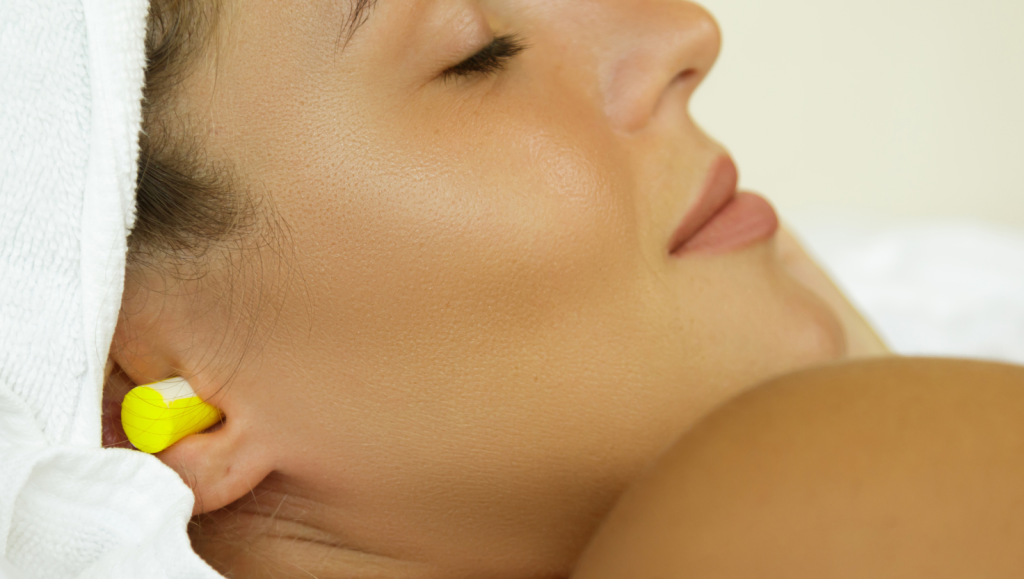Insomnia and other sleep problems have been worrying individuals for a long time. There are many causes for such disturbances, but snoring, for instance, is a cause that denies a person sleep and, in the long run, poses serious health risks. Cotton has been used for many years as a traditional tool for preventing outside noise interference during sleep. They cannot be customized to achieve the needed level of noise reduction. In this article, we will give brief information on loop earplugs, how they function, and whether they really help reduce snoring sound.
What Are Loop Earplugs?
Loop earplugs are reusable earplugs which are manufactured with soft silicone and which are meant to be inserted into the external auditory meatus. They have a loop portion that rests at the outer perimeter of the ears and an earphone portion that fits in the intensity of the ears. Part of the loop portion can be twisted in order to lock the earplug in place to the user’s ears. That is why loop earplugs can be used for different purposes, such as keeping snoring and other unwanted sounds away at night.
How Loop Earplugs Work?
Loop earplug’s make it impossible for external noise to reach the eardrums by blocking the ear canal. It is made from soft silicone, which forms a good contact with the shape of the ear canal, thus blocking it and allowing little sounds into the ear. This works well for low and medium-frequency noises, such as snoring. The outlined algorithm works well because of the ability of the microphones to pick up low to medium-frequency noises. However, the hearing aid benefits that could be derived from such sound continually may differ with the structure of the ear.
How Loop Earplugs for Snoring Can Help

1. Customizable Fit: Because loop earplugs are made from soft and pliable silicone, it is possible to shape them using the relatively small and uniquely shaped openings of the ears. This customization is worn to achieve both comfort and efficiency in blocking out the noise within the room.
2. Cost-Effective: It was also established that loop earplugs are reusable as they can be used over and over; therefore, they are economical for usage when trying to minimize snoring and other noises at night.
3. Reusable and Eco-Friendly: Consequently, compared to conventional, disposable earplugs, loop types of earplugs are reusable and thus have a more sustainable and less costly use.
4. Safe for Use: Loop earplugs are safe to use to block snoring and other noises because they are non-toxic and made out of medical grade silicone.
5. Minimal Impact on Sleep Quality: The sleek design of its construction of loop ear plugs makes them comfortable and restful for their users and does not induce any irritation to the user when worn.
6. Versatile: There are several uses of Loop earplugs; these are: sleep/noise, relaxation/meditation, and at work/while using machinery.
Making of Loop Earplugs
Making your own loop earplugs is a relatively simple process, and all you need are a few materials:
Materials:
1. It’s advised to use the 10A durometer medical-grade silicone.
2. Flexible moulding material or silicone mould rubber
3. Silicone caulk or adhesive
4. Toothpicks or popsicle sticks
5. Scissors
6. Water
Instructions:
1. Prepare the mould: For making a mould of your earplug, use silicone mould putty or an impression material to make an impression of your ear canal. This process should be carried out where the subject is well-illuminated and must be well-behaved. In the impression, ensure that the contour of the canal and the skin area of the ear is achieved.
2. Remove the impression: Let the mould set as the manufacturer has recommended it. After that, gently take the mould out from the ear canal and cut any extra material at the sides and bottom.
3. Create the earplug: The silicone caulk or adhesive must be prepared by following the directions given in the pack. After that, turn the mixture into the mold and level its surface. Place a toothpick or a popsicle stick in the centre of the tray to reach the bottom of the cavity. The silicone should not stick to the toothpick or popsicle stick you’ll use when pouring the silicone mould.
4. Cure the silicone: They’ll dry in the twenty to thirty minutes or according to the manufacturer’s instructions for curing the silicone. This can take anything from a few hours to one whole day, depending on the individual case.
5. Remove the earplug: When the silicone has been set completely, use an examining toothpick or popsicle skewer to twist out earplugs from the mould. Cut off any extra skin that you may find around the four corners of the tape.
6. Repeat the process: To have more of the same earplugs, all one has to do is repeat the same process with a new mould.
Using Loop earplugs for snoring

When using loop earplugs to block out snoring, make sure to follow these steps:
1. The first is the prevention of bacteria transferring to the earplugs, so basically, you should clean your hands.
2. Inserting the earplug and it will fit in the ear canal easily, and there will be no problem with falling off.
3. Rotate the loop part and lock the earplug into position. Making this possible is that the earplug will stay in its position even at time of sleeping.
4. Twist and pull to remove the earplugs.
Other Approaches to Reducing Snoring
While loop earplugs are an excellent solution for blocking out snoring, there are other methods available as well:
1. Earplugs with Foam Tips: These earplugs come with foam tips that are fitted into the ear canal and give noise reduction capacity. Nevertheless, they are not as customizable as loop earplugs, especially to fit special cases.
2. White Noise Machines: A white noise machine also comes in handy, as the resultant noise drowns the sound of snoring to some considerable extent.
3. Nasal Dilators and Strips: These devices reduce the incidence of snoring by making the nasal passage bigger, and they actually work to the effect.
4. Anti-Snoring Mouthpieces: Snoring is controlled by blocks placed in the oral cavity to help reposition the tongue or keep the air passage in patency.
